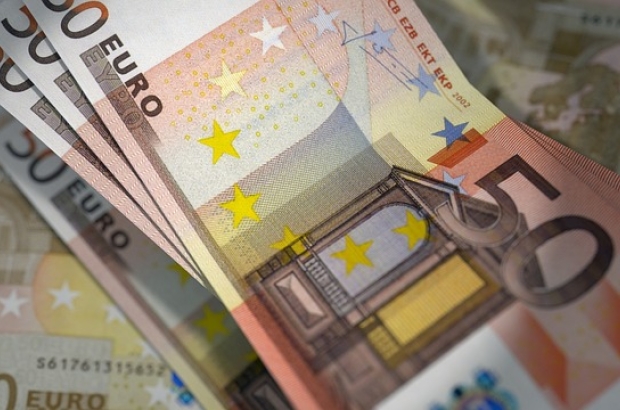- Daily & Weekly newsletters
- Buy & download The Bulletin
- Comment on our articles
Investors can now buy state debt through government bond scheme
Investors have until Friday, 3 June to subscribe to the new government bonds issued by the Federal Debt Agency on Tuesday, RTBF reports. The state proposes a rate of 0.70% (gross) for the five-year government bond and 1.30% (gross) for the 10-year one.
It has been three years since this type of investment product was last offered. The government bond, a long-term loan that allows the state to finance itself, is an investment intended for individuals and non-profit organisations, "people who do not easily find the way to investments in linear bonds, our main product", explains Jean Deboutte, the director of the Federal Debt Agency.
It is "a fairly simple investment in government debt with a fixed duration, with an annual coupon that is paid at maturity."
Withholding tax of 30%
The individual investor can buy government bonds in increments of €100. The investor lends to the state, which will pay annual interest. This interest is 0.70% for the government bond of five years or 1.30% for a 10-year bond. As it's a gross interest rate, the interest will be subject to a withholding tax of 30%. The net interest rate on the five-year government bond is thus 0.49%, 0.91% on the 10-year bond.
The last offer of Belgian government bonds dates back to 2019. After this last issue, the Federal Debt Agency temporarily stopped issuing them because interest rates were too low. "The last issue was made at a rate of 0.55%,” recalls Deboute. “Three months later, we were even lower, and it was no longer worth offering this product."
At present, rates on the bond markets have risen to slightly higher levels, which has lead the Debt Agency to offer these interest rates, hoping to attract individual investors and non-profit organisations. For the Debt Agency, it's also an opportunity to borrow on attractive terms, especially if the rise in rates continues.
Two possibilities are available to the investor who would be interested in these government bonds. First, they can go to their bank. "Banks can deliver this product to your securities account. You normally have to have a securities account with the bank," explains Deboutte.
The second option is to contact the Federal Debt Agency directly. "There is, on our website, the application that allows an online subscription, in what is called the General Ledger,” Deboutte continues. “There, the management is free because it is not necessary to open a securities account."
How competitive are the bonds?
With gross interest rates of 0.70% (0.49% net) or 1.30% (0.91 net), should you commit your money for five or 10 years? "We have to look at the competition, savings accounts, term accounts with banks, these are not high rates either," says Deboutte. "I think we're competitive at the moment," he added.
It is true that with an interest rate of 0.11%, including loyalty premium, the vast majority of interest opportunities offer less to the individual investor than the new government bonds.
For some observers, even at 1.30%, the interest rate on government bonds remains low. "This is still extremely low compared to inflation which, for th1proximately," he adds. "The investor who will buy such a voucher will, as on savings books, continue to lose a lot of purchasing power."
So, will savers and individual investors leave money in their savings account or direct some of it to government bonds? The two products have different practical modalities. An interest account will allow its holder to withdraw money at any time. The money placed in a government bond, on the other hand, is only recovered at maturity, after five years or 10 years in this case. It(s still possible to resell a government bond along the way, but you will lose some of its starting capital. It is the market that sets the value of a "second-hand" government bond. In addition, on resale before maturity, a tax of 0.12% on stock exchange transactions could be due.
Future interest rates?
The future evolution of interest rates must also be taken into account. There is no crystal ball to predict the future of interest rates on savings and investment products. Recent statements by the head of the European Central Bank, Christine Lagarde, suggest a rise in rates, evoking an end to negative rates by the end of the third quarter. Will this bring more interesting investment opportunities than current government bonds? The question remains open.
Historically, the government bond is a financial product prized by Belgian savers and investors. It is low risk, since the bankruptcy of the state would be the only reason why we would not recover the initial stake.
Meanwhile, borrowing money from Belgians has often been an effective way for the state to finance itself. In previous legislatures, finance ministers have used it.
Past bond schemes offered attractive rates
Bond schemes were particularly popular in the 1990s. The rates offered back then would make today's savers green with envy. In 1991, for example, the saver could count on a rate of 9.15% for a five-year government bond. Until the 2010s, government bonds offered more attractive rates than savings accounts to those who were willing to block funds for a few years.
In 2011, the Belgian debt was put under pressure by the financial markets, and the Belgian state struggled to borrow at reasonable rates.
Whether these current bonds will make it worthwhile to toady’s investors will only become clear once the subscription period is over on 3 June.



















Comments
A withholding tax of 30%? So, the state is making money on its own debt, taxing the people who lend it the cash it needs? Dumb.